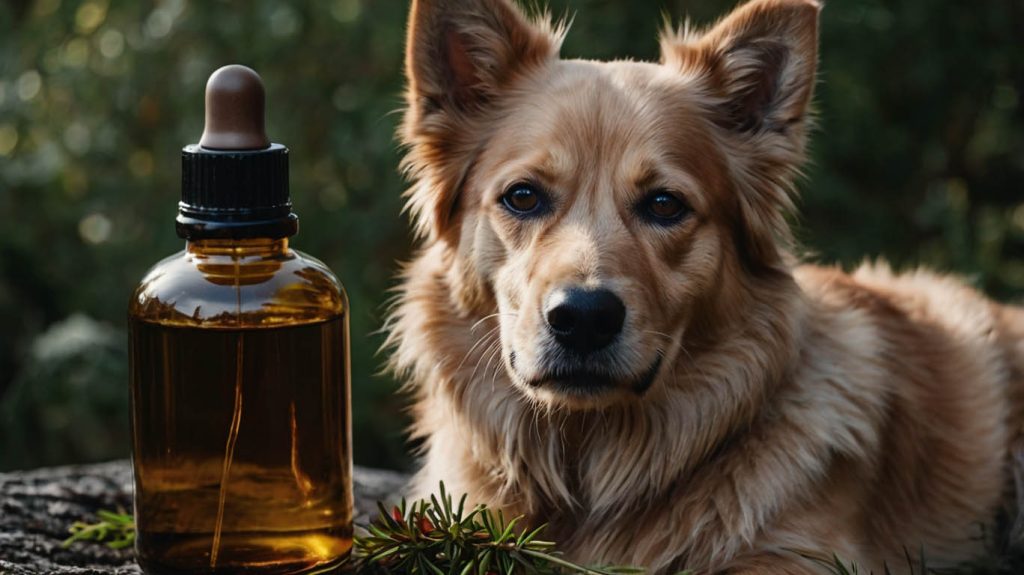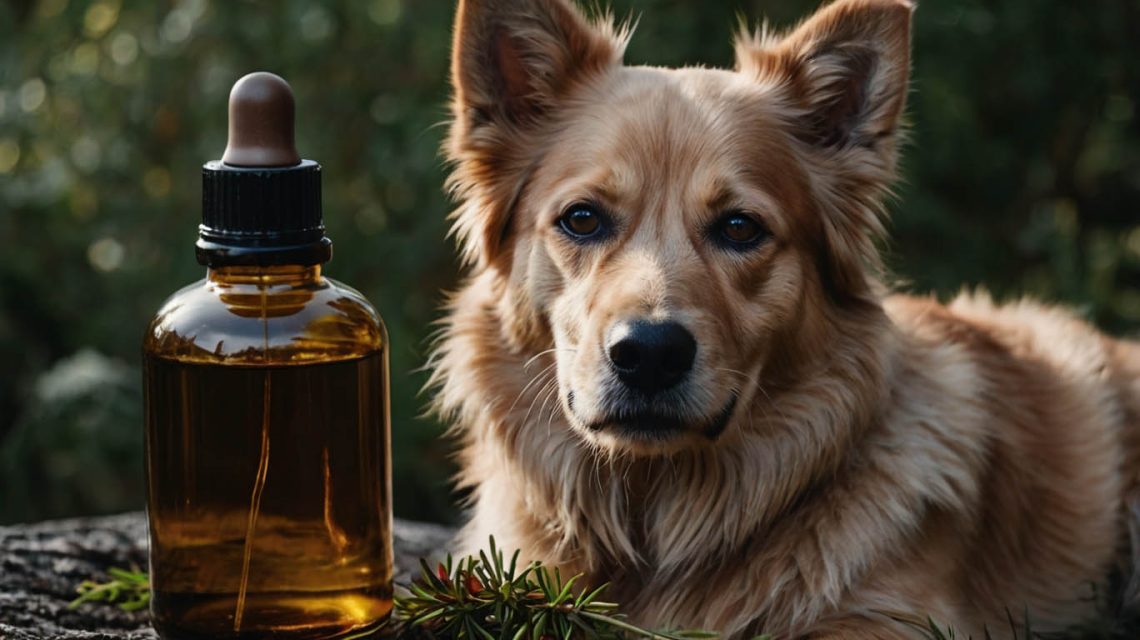Is Cedar Oil Safe for Dogs? The Ultimate Guide for Pet Parents
Jenna adored her rescue dog, a scruffy terrier mix named Leo. But there was one problem she couldn’t seem to solve: fleas. She felt like she was in a constant battle, and she grew increasingly uncomfortable using chemical spot-on treatments month after month. Worried about the long-term effects, Jenna started searching for natural alternatives. Her research led her down a rabbit hole of forums and blogs, where one recommendation kept appearing: cedar oil. It was hailed as a miracle flea repellent. Yet, for every glowing review, she found a frightening warning. This left her with a pressing, confusing question: is cedar oil safe for dogs?
Jenna’s dilemma is one shared by millions of well-intentioned dog owners. You want to protect your beloved pet from pests, but you also want to do it in the safest, most natural way possible. The internet provides a dizzying mix of information, making it nearly impossible to get a straight answer.
Consequently, this comprehensive guide is here to cut through the noise. We will break down the science, explore the different types of cedar oil, detail the risks and benefits, and provide a clear, actionable plan. Therefore, you can make an informed decision and confidently answer the question, “is cedar oil safe for dogs?”
The Critical Answer: Is Cedar Oil Safe for Dogs?
Here is the most important takeaway: The answer is not a simple yes or no. Instead, it depends entirely on the specific type of cedar oil being used. This single detail is the difference between a safe, natural pest repellent and a potentially toxic substance. Failing to understand this distinction is the biggest mistake a pet owner can make.

Understanding the Two Main Types of Cedar Oil
Not all “cedar” is created equal. When discussing if is cedar oil safe for dogs, we are primarily talking about two very different plants that produce two very different oils.
The SAFE Option: Texas Cedarwood Oil (from Juniperus ashei or Juniperus mexicana)
This is the type of cedar oil you should be looking for.
- Why It’s Safer: Texas Cedarwood oil is steam-distilled from the wood of these specific juniper trees. Crucially, it does not contain harmful levels of phenols or a neurotoxin called thujone. It is the active ingredient in most commercially available, pet-safe, cedar-based flea and tick sprays. Its primary function is to repel and kill pests through non-toxic mechanisms.
- How it Works: It works by disrupting the pheromones of insects like fleas, ticks, and mosquitoes, causing them to become confused and disoriented. It can also suffocate them on contact by blocking their breathing pores (spiracles). This is why determining is cedar oil safe for dogs starts with identifying this specific type.
The TOXIC Option: Western Red Cedar Oil (from Thuja plicata)
This is the type of cedar oil you must avoid at all costs for your pets.
- Why It’s Toxic: This oil is derived from a completely different plant family. It contains high levels of the neurotoxin thujone as well as other phenols that can be incredibly harmful to dogs. Direct contact or inhalation can lead to severe skin irritation, respiratory distress, and can even cause damage to the liver and nervous system.
- The Danger: Many generic “cedar essential oils” found in health food stores or online marketplaces do not specify the plant source. If it doesn’t explicitly state it is from Juniperus ashei or Juniperus mexicana, you must assume it is unsafe.
The Potential Benefits: Why People Ask “Is Cedar Oil Safe for Dogs?”
People seek out cedar oil for several compelling reasons, with pest control being at the top of the list.
Cedar Oil as a Natural Flea and Tick Repellent
This is the primary benefit. For owners like Jenna who are wary of chemical pesticides, a properly formulated, pet-safe cedar oil spray offers a powerful alternative. It can be used to:
- Repel fleas, ticks, and mosquitoes on a dog’s coat.
- Treat bedding, carpets, and furniture to kill pests in the environment.
- Serve as a yard spray to create a pest-free zone.
Other Potential Uses of Pet-Safe Cedar Oil
Beyond pest control, the aroma of safe Texas Cedarwood oil is also used for:
- Deodorizing: Its pleasant, woodsy scent can help freshen up a dog’s coat and their bedding.
- Calming Properties: In aromatherapy, cedarwood oil is often associated with grounding and calming effects, though this is a secondary benefit to its pest-repelling action.

The Risks and Dangers: When Cedar Oil Is NOT Safe for Dogs
Even when using the “safe” type of cedar oil, there are still significant risks if it is used improperly. Answering “is cedar oil safe for dogs” requires acknowledging these dangers.
Signs of Cedar Oil Toxicity or Irritation in Dogs
If your dog is exposed to the wrong type of cedar oil or has a reaction to a pet-safe product, you might see the following signs:
- Skin Irritation: Redness, rashes, itching, or hot spots at the application site.
- Respiratory Distress: Coughing, wheezing, or difficulty breathing, especially if inhaled.
- Gastrointestinal Upset: Drooling, vomiting, or diarrhea if ingested.
- Neurological Symptoms: Lethargy, weakness, stumbling, or in severe cases of toxic exposure, seizures.
If you notice any of these signs, wash the product off your dog immediately with a gentle soap and contact your veterinarian.
The Dangers of Ingestion and Improper Dilution
You should never allow your dog to lick or ingest cedar oil, even the pet-safe kind. Furthermore, you should never apply undiluted cedarwood essential oil directly to your dog’s skin. It must be properly diluted within a carrier oil or as part of a professionally formulated product. The concentration is key to its safety.
Special Considerations for Vulnerable Dogs
Puppies, senior dogs, pregnant dogs, and dogs with pre-existing health conditions (especially respiratory or liver issues) are more sensitive. You should exercise extreme caution and always consult a vet before using any new product on these animals.
How to Safely Use Cedar Oil Products for Your Dog
If you decide to proceed, following these rules is non-negotiable. This is how Jenna eventually found a safe path for Leo.
- Rule #1: Verify the Species. Only purchase products that explicitly state they are made from Juniperus ashei or Juniperus mexicana. If the species isn’t listed, do not buy it.
- Rule #2: Choose Products Formulated for Pets. Do not attempt to create your own dilution. Buy a pre-made flea and tick spray from a reputable pet brand. This ensures the concentration is safe for topical use.
- Rule #3: Perform a Patch Test. Before applying the product all over your dog, spray a small amount on one area (like their back, near the tail) and wait 24 hours to ensure there is no skin reaction.
- Rule #4: Apply Sparingly and Correctly. Use the product in a well-ventilated area. Lightly mist your dog’s coat, avoiding their face, eyes, and genitals. You can spray some on your hands and gently rub it onto their neck and legs.
- Rule #5: Observe Your Dog. After application, watch your dog for any signs of discomfort or irritation.
Is Cedar Oil Safe for Dogs? A Veterinarian’s Perspective
Most veterinarians approach all essential oils with a healthy dose of caution. While they acknowledge the efficacy of well-formulated, pet-safe cedar oil products for flea control, they will almost universally advise against DIY concoctions. Their primary concern is safety. Your veterinarian is your best resource for discussing flea and tick prevention. Before starting any new treatment, natural or chemical, you should have a conversation with them.
The Final Verdict for Concerned Owners
So, let’s return to our original question: is cedar oil safe for dogs?
The answer is a conditional yes, but only if you are using a commercially produced, properly diluted product that is explicitly made for pets and derived from Juniperus ashei (Texas Cedarwood). It is never safe if it is from an unknown cedar source or from Western Red Cedar (Thuja plicata).
After her exhaustive research, Jenna finally found a reputable pet brand that met all these criteria. She performed a patch test on Leo, and after seeing no reaction, she began using the spray as directed. To her relief, it worked. The fleas disappeared, and Leo was happy and comfortable, without the chemical treatments she had worried about.
Your pet’s safety is paramount. If you are considering a natural pest-control solution, we strongly encourage you to speak with your veterinarian to discuss the best options for your dog. Share this guide with fellow dog owners to help them navigate the confusing world of natural pet care safely.


